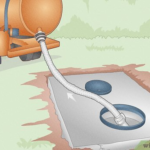Purchasing all of the equipment needed to host a party can be expensive. It also requires significant storage costs. Many rental companies offer a one-stop shop, eliminating the need to purchase multiple types of equipment.

These companies also stock a wide variety of items that can suit any vision. This helps make the event memorable. Connect with Party Rentals Thousand Oaks for reliable help.
A party rental company can provide all the necessary equipment for your event at a lower cost than purchasing it outright. This is particularly true if you need to rent large items like tables, chairs, and chinaware. Additionally, you’ll avoid the expense of storing and maintaining the items. Additionally, most party rentals offer rental insurance, which can protect you from third-party liability.
While the cost of renting is cheaper than buying, it’s important to consider all of your expenses when setting your prices. If you price your rentals too low, it will be difficult to make a profit and may even lead to stagnation or losses. To avoid this, you should create a pricing strategy that is in line with your market research and the current demand for your product or service.
Starting a party rental business is a great way to earn a steady income. It is a flexible business that can be run from your home or office, and requires little upfront capital. Additionally, it is a highly seasonal industry, so you will have more work during the holidays and in warmer weather. Additionally, it is a competitive industry, so you should be prepared to compete with other local businesses.
Aside from the obvious financial benefits, a party rental business also provides personal and professional growth opportunities. It is a good way to make connections with other business owners and professionals, and can open up new opportunities for partnerships and referrals. In addition, a party rental business can be a fun and rewarding experience for people who love to plan events.
It is also important to have a reliable team to support you. A well-trained and dedicated staff can help you achieve your goals, and ensure that your business is successful. This will allow you to focus on other aspects of the business, such as marketing and growth strategies.
Investing in the right employees is essential for your party rental business to be successful. You want to hire people who are flexible and passionate about what they do. In addition, it’s important to hire people who are trustworthy and will be able to keep up with your demanding schedule.
Flexibility
Using the services of a party rental company allows you to avoid buying supplies that you might not use again. This saves you money and provides more flexibility when planning your event. These companies offer a variety of items, including linens, chairs, and tableware. They also have lighting and other decor items to create the perfect ambiance for your event. They are a one-stop shop, and their equipment is delivered to your home or venue when you need it. They will even pick it up when the event is over. In addition, they provide clean utensils, so you don’t have to worry about washing them before use.
A successful party rental business requires more than just a good product and competitive pricing. Developing and implementing a marketing strategy that includes measurable results is key. For example, measuring the number of rentals and revenue generated per month can help you determine your profit margins. You can then price your products and services accordingly.
Creating and hosting an event takes time and energy, and you want to be rewarded for your efforts. A successful event will leave a positive impact on your guests and promote brand awareness. It will also increase your chances of getting repeat business.
Party rentals are a great way to celebrate special events and milestones, such as graduations, weddings, and large birthday parties. They can also be used for community events and fundraising activities. Regardless of the occasion, these events bring people together to share joyous experiences and build strong social networks.
Operating a party rental business does not require a physical storefront, and many companies operate from homes or storage facilities. This reduces overhead costs and enables you to focus on your business growth. You can also choose to rent your items on a flexible basis, such as by the day, week, or month. Providing flexible options helps you meet the needs of different customers.
In addition to flexible pricing, party rental businesses should have a robust inventory management process. This includes keeping track of inventory and ensuring that items are in good condition before each rental. The process should include routine maintenance and cleaning to prevent wear and tear.
Customization
A successful party requires careful planning and attention to detail. Fortunately, rental companies can help you avoid many of the common missteps that can lead to last-minute frustrations or expensive mistakes. It is important to thoroughly inspect the quality of rentals before the event, and choose a company that provides prompt communication and contingency plans. Moreover, choose a company that prioritizes regular maintenance and replacement of items. This will ensure that your guests enjoy clean, well-maintained, and attractive rental items.
Aside from providing the basics like tables and chairs, party rental services offer a variety of customization options that can help you transform your venue into a truly unique space. From monogrammed linens to bespoke signage, customizable items allow you to create an environment that aligns with your vision and theme. They can also be an effective way to make your event feel more intimate and special.
If you’re not sure where to start, ask your rental company for recommendations. They’ll be able to guide you through the entire process, from choosing a venue to selecting decor and AV equipment. They may even provide a full-service setup that eliminates the need for multiple vendors and saves you time and stress.
To ensure that your event goes off without a hitch, it’s a good idea to consult with an experienced event planner or professional decorator. They can help you select the best party rentals and make sure that they’re in good condition before the big day.
Whether you’re hosting a wedding, corporate event, or birthday party, the right rental items can help you create a memorable experience for your guests. However, navigating this vast field can be daunting. To make the process easier, consider the following tips to find the perfect party rentals for your event.
Whether you’re planning an elegant wedding, a birthday party, or a corporate event, you want to create an atmosphere that reflects your unique style and personality. While the latest trends can add a contemporary touch to your event, it’s important to balance these trends with your event’s overall theme and purpose.
Environment-friendly
Organizing an environment-friendly party can be challenging. From choosing the theme to sending out invites, there’s a lot of information to consider. However, you can reduce your environmental impact by selecting sustainable rental options and making simple changes to your celebration. By incorporating eco-friendly choices for rental items, choosing organic food and drink options, and avoiding single-use plastics, you can produce an unforgettable event while decreasing your ecological footprint.
Before starting a party rental business, it’s important to study your market. This step is called market research, and it helps you identify your target audience and what types of products or services they need. In addition, it helps you determine how your business will differ from other competitors and establish a competitive advantage. It also helps you develop a business plan that will guide your operations.
One of the most significant trends in party rentals is a shift toward sustainability. Many companies now offer sustainable rental options, such as reusable tableware and decorations made from recycled materials. They also offer a variety of customizable options, such as monogrammed linens and bespoke signage. These innovations allow hosts to express their personal style and make their events more memorable.
When selecting a party rental company, look for a reputable provider with a strong reputation and extensive inventory. You should also check whether they are licensed and insured. In some places, it’s mandatory to have liability insurance for your party rental business. This will help you avoid legal complications in the event of an accident or damage to equipment.
Another benefit of using a professional rental service is that they take care of everything from delivery to setup and tear down. This eliminates a huge headache for the host and allows them to relax and enjoy their event. Additionally, they provide top-notch equipment that is professionally maintained. Purchasing your own equipment can be expensive, and you’ll have to store it after the event.
Lastly, when choosing an environmentally-friendly rental company, choose one that uses local, organic ingredients. This will support local farmers and minimize carbon emissions from transportation. Additionally, opt for reusable plates, cups, and utensils to decrease waste. Make sure to label recycling and compost bins, and encourage your guests to use them.








